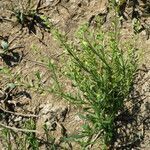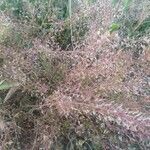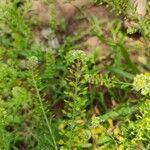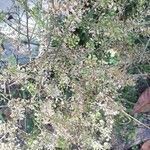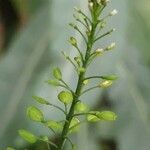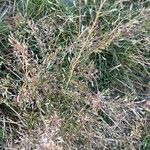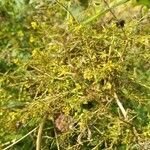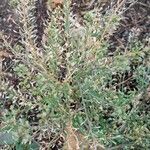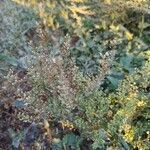Annuals or biennials; (fetid); puberulent (trichomes cylind-rical). Stems simple from base, erect ascending, branched (several) distally, (0.5-)1-3.5 (-5.5) dm. Basal leaves rosulate; petiole 1-3.2(-5.3) cm; blade (1-or) 2-or 3-pinnatisect (lobes oblong), (1.5-)3-5(-7.2) cm, margins (of lobes) usually entire, rarely dentate. Cauline leaves sessile; blade linear, (0.4-)1-2(-3) cm × 0.5-2.5(-3.5) mm, base cuneate, not auriculate, margins entire. Racemes considerably elongated in fruit; rachis puberulent, trichomes straight, cylindrical. Fruiting pedicels divaricate to horizontal, straight, (terete), (1.5-)2-4(-5) × 0.1-0.15 mm, puberulent. Flowers: sepals oblong, 0.5-0.9(-1) × 0.2-0.4 mm; petals (absent or rudimentary), white, linear, 0.2-0.5 × 0.1 mm, claw absent; stamens 2, median; filaments 0.7-0.8 mm; anthers 0.1-0.2 mm. Fruits elliptic, (1.5-)1.8-2.5(-3) × 1.5-2(-2.3) mm, apically winged, apical notch 0.1-0.2 mm deep; valves thin, smooth, not veined, glabrous; style obsolete or to 0.1 mm, included in apical notch. Seeds oblong to ovate-oblong, 1-1.5 × 0.6-0.8 mm. 2n = 16, 32.
Foetid, minutely hairy annual or biennial, 2–5 dm; basal lvs commonly bipinnately lobed; lower cauline lvs usually pinnatifid, the upper entire or dentate, rounded or obtuse at the tip; stamens 2; mature racemes loose, with 6–10 frs per cm; fr ovate to elliptic, generally broadest near or below the middle, 2–3 mm, three-fourths as wide, wingless; stigma included in the notch; seeds wingless; 2n=16. Native of Europe, intr. in waste places here and there in our range.
A cabbage family herb. It grows for one or two years. It grows 10-35 cm tall. The leaves at the base have short stalks and higher up they do not have stalks.
